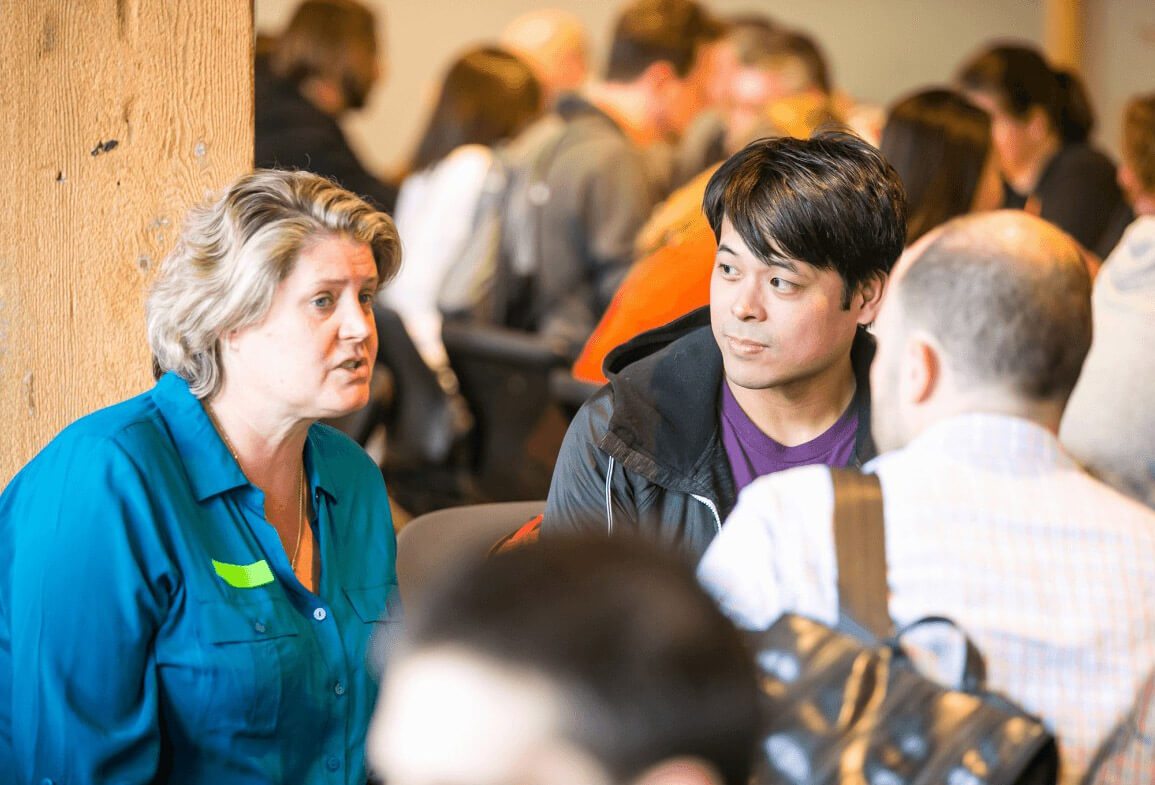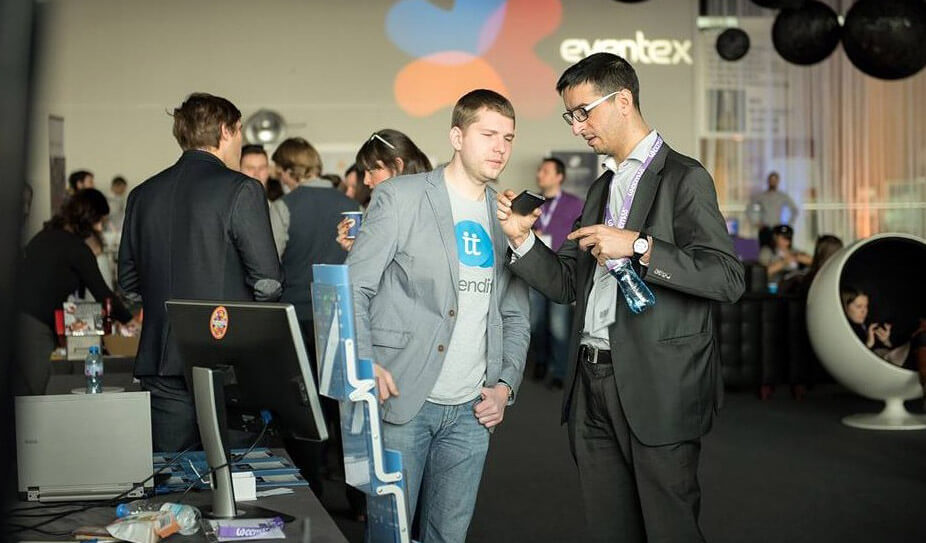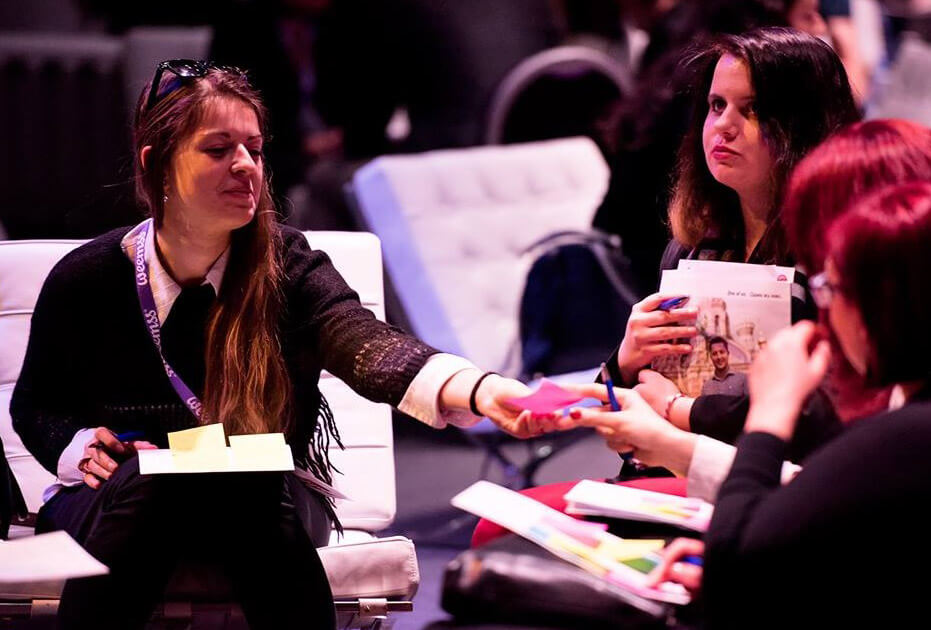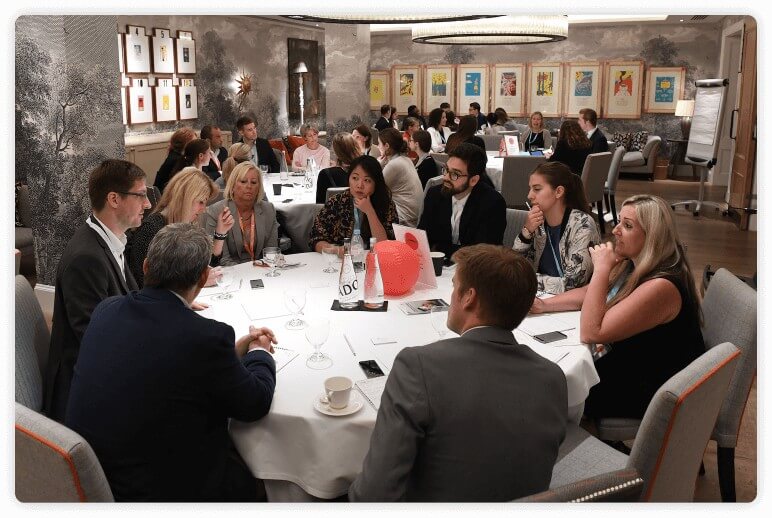Networking is one of the main reasons why people go to events. According to the Forbes Insights survey, 85% of people build stronger, more meaningful relationships during a face-to-face interaction.
But let’s face it: it isn’t always easy, even for the more outgoing of us.
Fortunately, there are many ways to take away the pressure of meeting people and make the process easy and fun for the attendees.
These 5 ideas for event planners will help you turn networking at your next event into a memorable experience.
Speed networking
Speed networking is one of the fastest growing forms of networking in the world. It is a quick and efficient way for attendees to maximize the number of people they meet in a short amount of time.
This format consists of a set amount of rounds with a set amount of time per round, and attendees rotate accordingly. To make it easier for people to move along, get them to sit in two parallel rows facing each other.
The average 90-minute speed networking event with 100 participants will generate 1,000+ new connections, which is 333% more than traditional networking events.
The structured nature of speed networking helps to take the pressure off and eliminate feelings of intimidation.
Roundtable networking
Roundtable networking is another popular and effective way to connect people during events. It allows for idea sharing and collaboration through open discussion among attendees.
While it is common to have open seating, you can take it one step further and strategically seat your attendees to bring specific people together. You can group the attendees based on their industry, job title, region, preferred themes for discussion, etc.
Roundtable networking formats are often viewed as less intimidating, as they take the pressure off the individual.
Targeted connections
Targeted connections format is a cost-effective option that puts the reins of networking into the hands of the attendee.
The idea is that each attendee receives a customized list of people they should reach out to. The list is created based on each participant’s unique interests indicated prior to or at the start of the event.
During the course of the event, it is up to each person to decide when, where, and how they want to connect with their matches. The networking process is driven by each attendee’s own initiative.
This format makes it much easier for event organizers, as they don’t have to worry about fitting networking time in with individual schedules of hundreds or thousands of attendees.

Competitive networking
Are you looking for a fun way to enhance the traditional mix and mingle event? Spice it up with some competition.
Make the networking process a contest to see which attendee meets the most people. For example, you can ask each person collect as many business cards as possible by the end of the event.
This format works great in both dedicated networking sessions and as a competition that runs in the background during the whole event.
To incentivize people, you can announce that the winner gets a prize at the end.

Icebreakers
Icebreakers are an excellent way to connect people, get them to interact and make them feel more comfortable in a group of strangers. Why not turn your networking event into a fun game to take the pressure off the attendees?
To help people learn more about each other, organize a scavenger hunt, human bingo, or get them to play two truths and a lie. This article will give you a step-by-step guide on how to go about it.
Take it one step further and execute these gamified networking ideas using live polls. It is an extremely effective way to instantly engage a large crowd and get people’s attention.

Wrap up
Networking is often the number one reason people attend events, so it’s important to get it right. When you’re planning a networking session, consider which format suits your event the best. These seven tips will help you deliver an outstanding and memorable networking experience for the attendees.
This article was originally published in its full form by Shannon Kelly, Endless Events’ Marketing Specialist & Content Curator on March 22, 2018.






